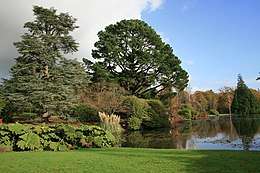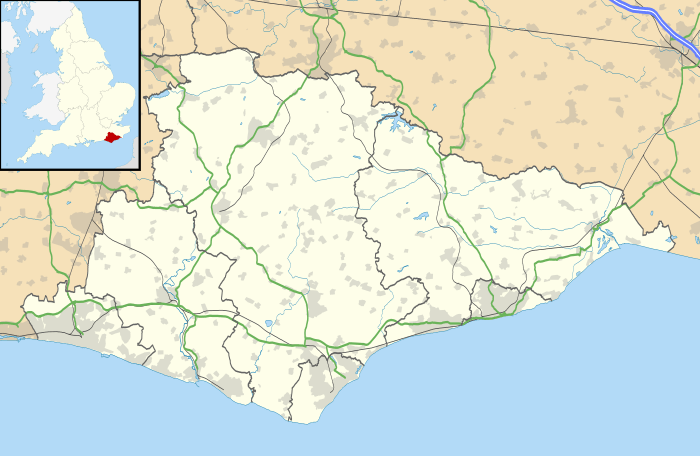Sheffield Park Garden
Sheffield Park Garden is an informal landscape garden five miles east of Haywards Heath, in East Sussex, England. It was originally laid out in the 18th century by Capability Brown, and further developed in the early 20th century by its then owner, Arthur Gilstrap Soames. It is now owned by the National Trust.


History
The gardens originally formed part of the estate of the adjacent Sheffield Park House, a gothic country house, which is still in private ownership. It was also firstly owned by the West Family and later by the Soames family until in 1925 the estate was sold by Arthur Granville Soames, who had inherited it from his childless uncle, Arthur Gilstrap Soames.

Sheffield Park as an estate is mentioned in the Domesday Book. In August 1538, Thomas Howard, 3rd Duke of Norfolk, entertained Henry VIII here. By 1700, the Deer Park had been partially formalised by Lord De La Warr who planted avenues of trees radiating from the house and cleared areas to establish lawns. In the late 1700s, James Wyatt remodelled the house in the fashionable Gothic style and Capability Brown was commissioned to landscape the garden. The original four lakes form the centrepiece. Humphry Repton followed Brown in 1789–1790. In 1769, the estate was sold to John Holroyd, created Baron Sheffield in 1781. It is particularly noted for its plantings of trees selected for autumn colour, including many Black Tupelos.
By 1885, an arboretum was being established, consisting of both exotic and native trees. After Arthur Gilstrap Soames purchased the estate in 1910, he continued large-scale planting. During World War II the house and garden became the headquarters for a Canadian armoured division, and Nissen huts were sited in the garden and woods. The estate was split up and sold in lots in 1953. The National Trust purchased approximately 40 ha in 1954, now up to 80 ha with subsequent additions. It is home to the National Collection of Ghent azaleas.
In 1876 the third Earl of Sheffield laid out a cricket pitch. It was used on 12 May 1884 for the first cricket match between England and Australia.[1] The Australian team won by an innings and 6 runs.[2]
See also
- Sheffield Park is a railway station on the heritage Bluebell Railway.
- Sheffield Park, Uckfield, the cricket ground.
References
External links
| Wikimedia Commons has media related to Sheffield Park Garden. |